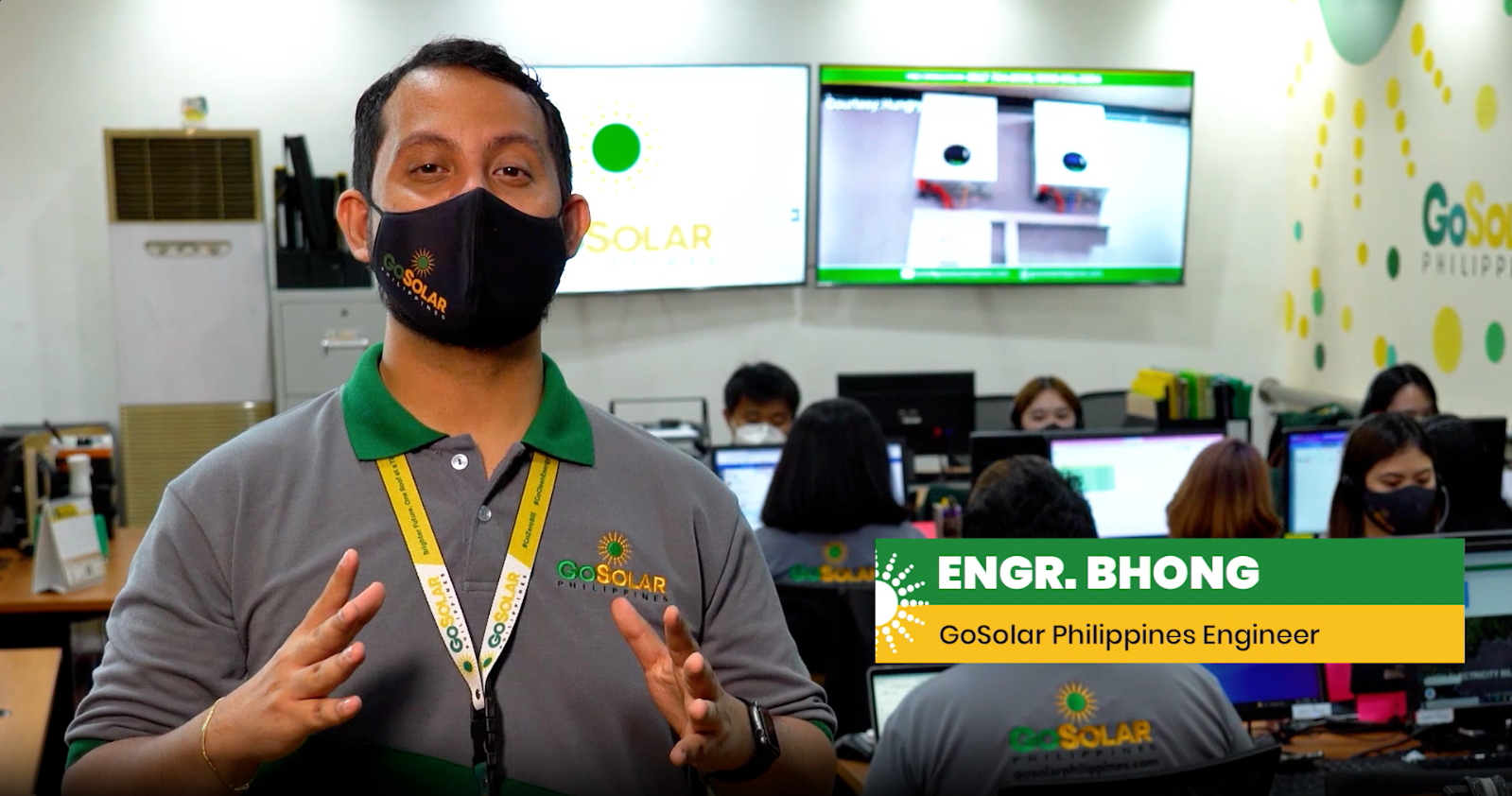Frequently Asked Questions

These are the frequently asked questions.
The cost of a solar power system can vary depending on a number of factors, such as monthly electricity bills, the size of the system, and the type of appliances used. It is best to contact a GoSolar representative to find a system best suited for your needs.
We want to make solar energy more accessible to every Filipino by offering various payment schemes and financing options.
The number of solar panels needed for a house depends on several factors, including the size of the house, the amount of electricity used, and the available space for the panels. It would be best to consult with a GoSolar representative to determine the specific number of panels needed for your home. They will take into account factors such as your energy consumption, sun exposure, and local climate conditions to give a more accurate estimate.
Solar power works by capturing the energy from the sun and converting it into electricity. This is done using solar panels, which are made up of photovoltaic cells. These cells convert the energy from the sun into direct current (DC) electricity. The DC electricity is then sent through an inverter, which converts it into alternating current (AC) electricity that can be used in homes and businesses. The AC electricity is then sent to the electric grid, where it can be used by others, or it can be stored in batteries for later use.
A grid-tied solar system, also known as a grid-connected or “on-grid” system, is a type of solar power system that is connected to the electrical grid. This means that the solar panels generate electricity that is used to power the home or business, and any excess electricity is sent back to the grid. The system is connected to the grid through a net meter, which measures the amount of electricity produced by the solar panels and the amount of electricity used by the home or business. If the home or business is producing more electricity than it is using, the excess electricity is sent back to the grid and the homeowner is credited for the excess energy produced.
A hybrid solar system, also known as a “grid-tie with battery backup” system, is a type of solar power system that combines the features of a grid-tied system with the added benefit of a battery backup. Hybrid systems also include a battery/power wall that stores the excess electricity generated by the solar panels for use during times when the solar panels are not producing enough electricity or during a power outage.
The installation varies depending on several factors, including the accessibility of the site, and weather conditions. A usual residential solar power system will only take 1 – 2 days to install.
The solar power system offered by GoSolar is covered by a workmanship warranty and the major components used are covered by the manufacturer’s warranty. The manufacturer’s warranty varies in years of coverage per brand.
Installing a solar power system can help you save money on your electricity bills. This will also depend on weather conditions and your system utilization. A typical solar power system can save around ₱ 5,000 – ₱ 10,000 monthly.
During the night, the sun is not shining on the panels, so they cannot produce electricity. However, you can store the energy generated during sunny days in batteries or through the grid-tie systems that allow you to feed the excess energy to the grid and draw from it during the night or cloudy days. It is also possible to use backup power sources such as generators or connected to grid power to ensure a continuous power supply during those days.
They can still produce some electricity, just not as much as on a sunny day. It is important to note that the amount of electricity generated on a rainy day will depend on the intensity of the rain and the amount of sunlight that still reaches the panels. It is also important to note that solar panels are designed to be durable and resistant to various weather conditions, including rain, so they will not be damaged by it.
Solar power systems require very little maintenance, but regular cleaning and inspections can help ensure they continue to operate at maximum efficiency.
Yes, having a grid-tie solar power system does not mean you will be completely independent of the grid, it can only reduce your dependence on it.
Net metering is a billing arrangement that allows homeowners with solar power systems to send any excess electricity they generate back to the grid, and in return receive credits on their utility bill. The credits can be used to offset the cost of the electricity they consume from the grid when the solar panels are not producing enough energy to cover their needs. This is measured by a special meter that records both the energy you consume from the grid and the energy you send back.


